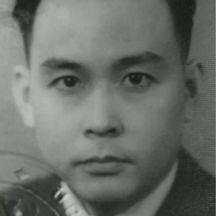
Li Shaoshi
| Name | Li Shaoshi |
| Title | Proletarian revolutionary |
| Gender | - |
| Birthday | 1906-01-01 |
| nationality | — |
| Source | https://baike.baidu.com/item/李少石/8236085 |
| pptrace | View Family Tree |
| LastUpdate | 2025-10-01T11:02:42.411Z |
Introduction
Li Shaoshi (1906 – October 12, 1945) was a revolutionary figure in modern Chinese history, with activities primarily concentrated in the 1920s through the 1940s. Born in 1906, he initially received education at Huang Ren Academy and later moved with his family to Guangzhou. During his time in Guangzhou, he attended Lingnan University and became classmates with Liao Mengxing.
In 1925, Li Shaoshi joined the Chinese Communist Youth League. During this period, he participated in the Guangzhou "June 23" guerrilla warfare and worker strike movements, which led to his expulsion from school. Subsequently, he worked at the Guangzhou Seamen's Union. The following year, he officially joined the Chinese Communist Party. After the failure of the Great Revolution in 1927, he was dispatched to work in Hong Kong. In 1930, he was reassigned to Hong Kong, where he established a secret communication station in Sai Wan, responsible for liaison between the Shanghai Central Committee and the Soviet Base. During his time in Hong Kong, he married Liao Mengxing, and after their marriage, they set up a working station in a remote area of Hong Kong Island, facilitating visits and communication with party leaders like Deng Xiaoping and Cai Chang.
In 1932, Li Shaoshi was transferred to Shanghai, where he served as the Minister of Propaganda for the Jiangsu Provincial Committee of the Chinese Communist Party and also headed the "Chinese Workers' News Agency." On February 28, 1933, he was arrested after being betrayed, subsequently imprisoned in Nanjing and Suzhou. Despite suffering injuries to his legs and lung damage during imprisonment, he composed poetry reflecting his revolutionary resolve, such as "Dying for righteousness is not sorrow enough" and "Heroes smile as they face the execution ground." That summer, his family took a photo in Shanghai, recording their family life.
In 1937, the Marco Polo Bridge Incident broke out. To cope with the outbreak of war, Zhou Enlai proposed releasing political prisoners during the negotiations between the Kuomintang and the Communist Party. In August, Li Shaoshi was released. After Shanghai fell, he followed Liao Mengxing south to Hong Kong and continued working for the party organization. In December 1941, when Hong Kong fell to the Japanese, he and his family evacuated to Macau for safety.
In the spring of 1943, Li Shaoshi was sent to Chongqing to serve as a reporter and editor for the "Xinhua Daily." He also worked as Zhou Enlai’s English secretary in the Foreign Affairs Office of the Eighth Route Army stationed in Chongqing. In the fall of 1944, he exchanged poetry discussions with cultural figure Liu Yazi and exchanged poetic manuscripts.
On October 8, 1945, Mao Zedong, during negotiations in Chongqing, remembered Li Shaoshi’s sacrifice and contributions. On October 12, 1945, Li Shaoshi died in an accident caused by a female soldier in Chongqing, at the age of 39. Mao Zedong inscribed a memorial on his departure from Chongqing: “Comrade Li Shaoshi was a good Communist Party member. Sadly, he encountered his death. May his memory be forever honored.” Li Shaoshi’s sacrifice is regarded as a significant event in the history of China’s revolutionary movement.
Family Tree
Tap to expand more relatives
